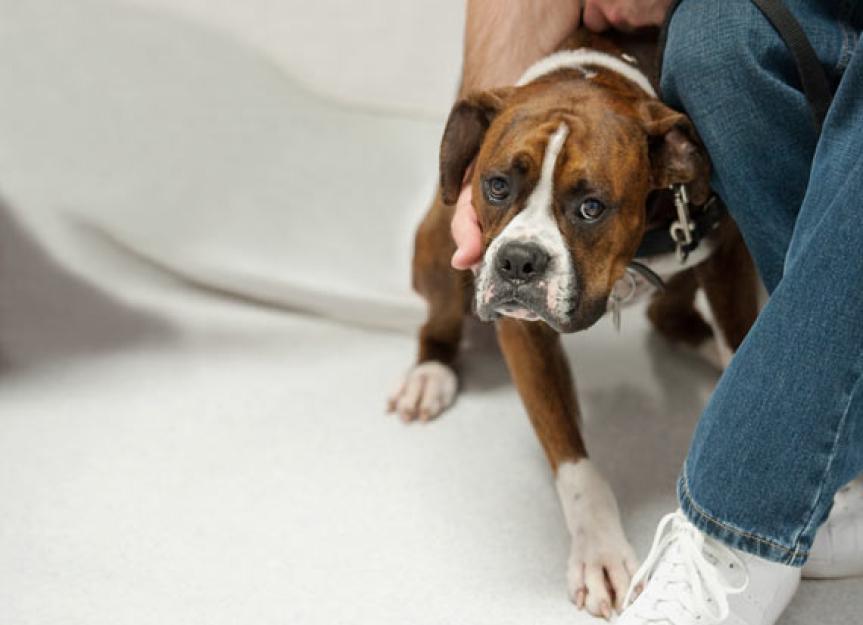Curing Fear with Treats and Love
Last reviewed on January 5, 2016
Last week, a reader posed the question, how can you help a puppy “that has had a traumatic experience during a fear imprint stage?”
It will depend on the puppy’s genetic predispositions and how traumatic the event was from the puppy’s perspective. My impression from my clinical practice is that many dogs who are exposed to a traumatic event early in life are not permanently scarred. This leads me to believe that many dogs who do succumb to a fear or phobia because of a traumatic event are most likely hereditarily predisposed to this type of emotional behavior. Nonetheless, we don’t have any concrete evidence to prove that point at this time.
What constitutes a traumatic event? It could be something as simple as prolonged separation from you, her owner. It could be a surgery, a bite from another dog, or a frightening encounter with a child. The trauma is in the eye of your puppy. The best way to understand the puppy’s perception of what happened is to read her body language. If she displays fearful body language, she could well be traumatized by the experience.
Observe how long it takes for her to recover from the trauma. If she has recovered immediately as the stimulus (person, animal, or thing) has backed off or disappeared, she is likely not traumatized by the situation. If she is trembling 10 minutes afterward, reacts extremely when back in the same situation, or displays fear when she is exposed to the environment where she was initially scared without the actual stimulus present, that experience has caused her trauma and her future behavior will most likely be shaped by it.
So, what to do?
Take it slow.
迫使她在环境和刺激that scare her without control over those stimuli will not make her better. It will make her worse.
Get organized.
Make a list of what frightens your dog. Include locations and stimuli. You should work through each of those stimuli methodically.
Find your dog’scurrency.
Use what your dog loves most to encourage and reward bravery.
Desensitize.
Expose her to what frightens her at a level at which she is not scared. Then, as she succeeds at that level, you can increase the level of the stimulus to increase her threshold or tolerance for the scary thing. Don’t move the stimulus closer until she is completely successful at a lower level,
Counter condition.
Pair something great with the scary stimulus. Take something you know that she loves and reward her generously with that special treat or toy when she is exposed to what scares her.
What I have written above sound pretty easy right? Then why do so many people fail at this procedure? The most common mistake is moving too quickly or forcing the dog to tolerate something in the hopes that she will adjust. That is called flooding. Flooding is a procedure where the puppy is exposed to the full strength stimulus instead of slow exposure.
Imagine that you are afraid of spiders. Which procedure below would help you get over your fear?
- You are tied to a chair and a box of spiders is dumped on top of you (flooding).
- You are sitting in a chair and every second you are handed $100 as you look at a box of spiders about 50 feet away. Each day, the box is moved one foot closer to you while those $100 bills just keep a comin’ (desensitization and counter conditioning).
Of course you chose “B,” and your puppy would too! It may be sounding pretty simple about now, but it can take many months to get through this procedure. You have to bring patience to the table as well.
If your pup has been traumatized and her behavior is changed by it, now is the time to act. Don’t wait. As she develops she will be most amenable to turning back the hands of time.

Dr. Lisa Radosta
Image:aspen rock/ viaShutterstock
Help us make PetMD better
Was this article helpful?
